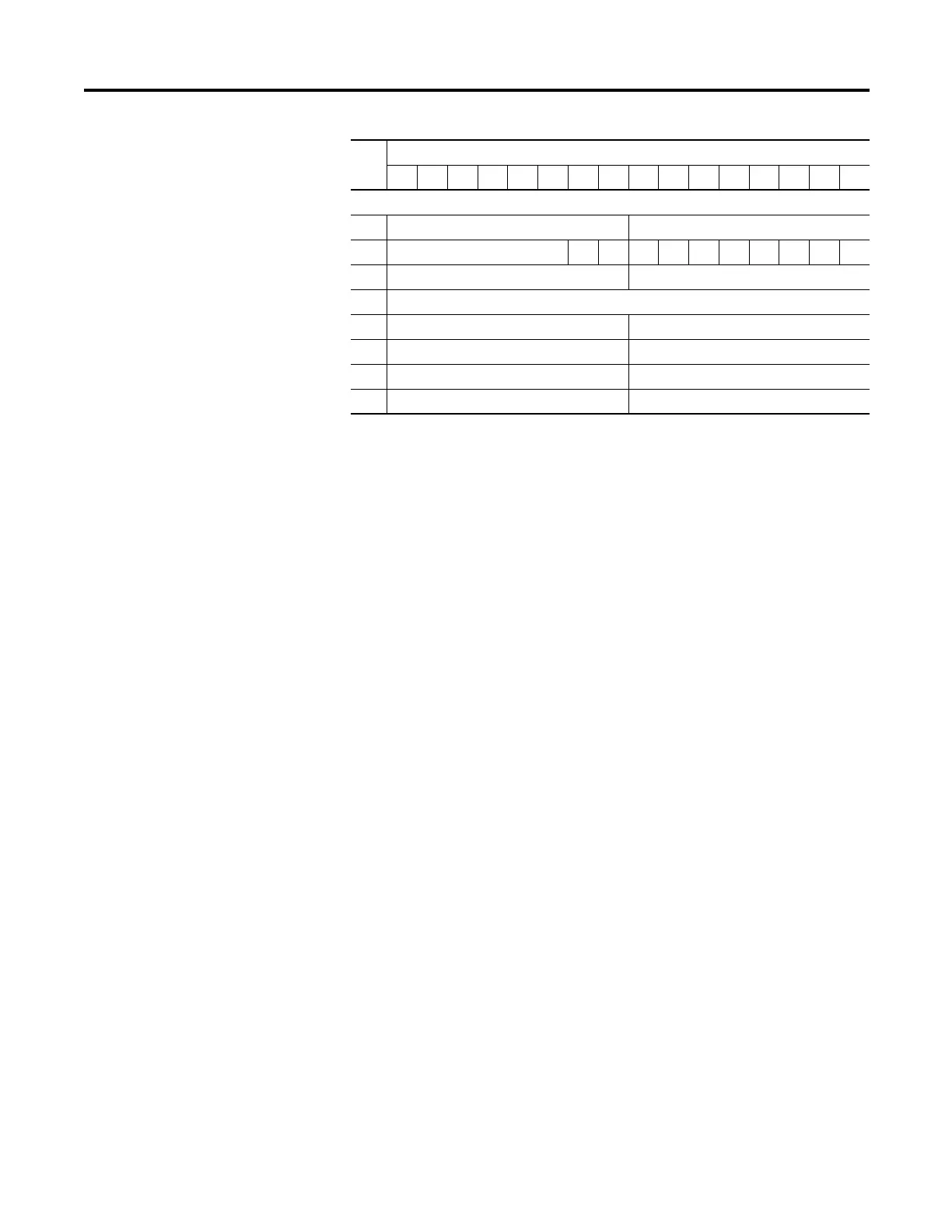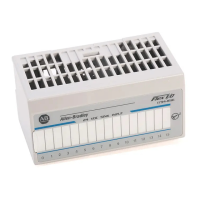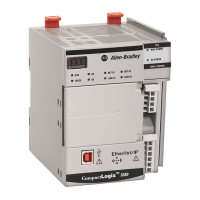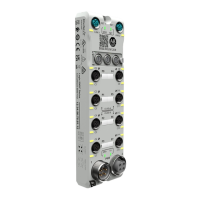Rockwell Automation Publication 1769-IN088A-EN-P - February 2011 183
I/O Memory Mapping Chapter 3
• Tx = Transmit.
• Rx = Receive.
• TG = Transmit greater than Max Error. Transmit length in the output file
is greater than the maximum transmit character length in the
configuration file.
• TS = Transmit sent. Indicates the ASCII module has sent the data
indicated by the Tx Transaction ID and can accept more transmit data.
• ND = New data. Only used for Handshake mode.
• HE = Handshake error. Only used for Handshake mode.
• NR = Non-delimited record. An input record is received and sent to the
Compact bus interface that was not triggered by a delimiter character. This
occurs when either the buffer is filled to its maximum receive size or a
Message Timeout has occurred.
• RF = Data in the receive FIFO. The FIFO is not empty. The input FIFO
has not sent all of its data to the Compact bus interface.
• TF = Data in transmit FIFO. The FIFO is not empty. The output FIFO
has not sent all of its data to the ASCII device.
Channel 1 Data
x+1 Tx ID Acknowledged Rx Transaction ID
x+2 Reserved TG TS ND HE NR RF TF PA RO TO
x+3 Firmware Revision, Major Firmware Revision, Minor
x+4 Length (Number of Bytes)
x+5 Character 1 Character 0
x+6 Character 3 Character 2
… Character … Character …
y
(2)
Last Character Character …
(1) X is calculated based on the size of Channel 0 data as specified in the input file. Both channels cannot contain
200 characters as the total configuration file size can be only 108 words.
(2) Y is equal to the connection size minus 1, with a maximum value of 107 for a buffer size of 108.
Word
Bit Position
1514131211109876543210

